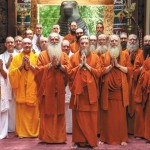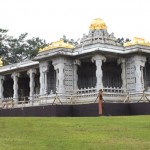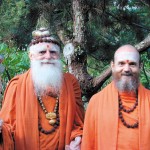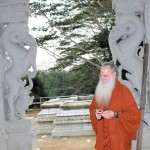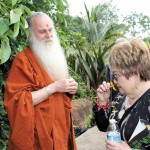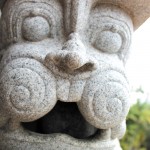The Tranquil Life At Kauai’s Hindu Temple
Kauai Hindu Monastery is a hidden gem tucked away in verdant Wailua Valley, where exotic plants and birdsong inspire peace and tranquility. The land has been nurtured by monks since the 1970s after its founder, Gurudeva, initiated the purchase of the property. It is a retreat where the spiritually minded can find serenity and dive into the depths of their consciousness, as well as a place for visitors of all faiths and backgrounds to relish in its unequivocal beauty.
When the monks (all men) aren’t busy graciously accommodating guests during one of their weekly 90-minute tours of the property, they spend most of their days in meditation, worship and their chosen area of service, such as cooking. They are awake at dawn and in bed by 9 p.m., working by a lunar calendar and devoting their lives to inner reflection and appreciation of all life.
- Since the 1970s in Wailua Valley, Hindu monks have been creating a place of peace and the pursuit of consciousness, where all faiths are welcome. Pictured here are each of the temple’s 21 monks
- The hand-carved Iraivan Temple in progress
- Gurudeva, Kauai Hindu Monastery founder (left) with his successor, Satguru Bodhinatha Veylanswami. Photo courtesy Sadasivanathaswami
- Sadasivanathaswami shares stories about the Kauai Hindu Monastery’s Iraivan Temple
- Sadasivanathaswami hosts a tour of the monastery and stops to smell some of the exotic flowers on property with former state Sen. Donna Ikeda
- Some of the details of the Iraivan Temple
- A chain created for the Iraivan Temple is carved from a single piece of granite
“I live the most profoundly wonderful life a human being could hope for,” says Paramacharya Sadasivanathaswami, who took a vow to become a swami 45 years ago, renouncing his former life, which he hasn’t spoken about since.
Sadasivanathaswami’s chosen line of service is editor of the monastery’s worldwide magazine Hinduism Today, which is distributed to more than 60 countries.
He also is assisting with the construction of the monastery’s hand-carved temple Iraivan. The monastery already has a small traditional temple, which was built in the 1970s. Iraivan, however, was envisioned by the late Gurudeva in 1975 and has been in the process of completion ever since, including 15 years of designing and architectural planning. The temple is entirely hand-carved by craftsmen from Bangalore, India, where in 1991 the monastery constructed a village.
“Hand-carved brings life to the stone,” says Sadasivanathaswami. “Modern tools do not have the heart and subtleties of hand-crafted.”
The difficulty, however, in building a temple entirely by hand is finding people skilled in the craft.
“This diminishment of talent has really slowed down work in India to the point where we’re not quite sure how much longer it’s going to take to finish,” says Sadasivanathaswami.
When it is completed, the temple, which is composed of three types of granite – white, black and rose – will be a pilgrimage center and a holy destination for Hindus and spiritual seekers from around the globe.
Aside from the temple, what makes the monastery even more unique is that it is a model of self-sufficiency. The monks grow about 80 percent of their own food. They also have cows that provide them with milk and the ability to create dairy products like yogurt and ghee (clarified butter). The monastery, modeled after a traditional South India Hindu monastery and temple, also houses a photovoltaic system and an ability to mill its own lumber as well as create its own furniture.
The monastery has come a long way since establishing residence on the island several decades ago. Sadasivanathaswami was part of the original group of monks who moved to Kauai with Gurudeva from their monasteries on the Mainland (or what Sadasivanathaswami calls the “very big island”). They were traveling the world, meeting holy people, including the Dalai Lama, when in 1968 Gurudeva recommended they visit Hawaii.
They made Kauai their home shortly thereafter.
“He was a beautiful, graceful being,” says Sadasivanathaswami of Gurudeva, who passed away in 2001. “All of this is really his doing.”
Gurudeva was a voice of the Hindu tradition – a deeply mystical, philosophical and decentralized faith – and often traveled the world with monks, including Sadasivanathaswami.
“He spoke beautifully and boldly about it,” says Sadasivanathaswami.
As they traveled, Gurudeva realized, however, how disconnected and fragmented the Hindu communities were around the globe, and in 1979 he came up with the idea to develop a magazine in order to help bridge gaps and offer an eclectic presentation of Hinduism.
While having a globally recognized publication is rewarding, the deepening of consciousness and the inner journey Sadasivanathaswami has been taking toward enlightenment, or what is called “God realization,” is the most fulfilling part of his life.
“It’s the purpose of our life as monks,” he says of the 21 men he refers to as his brothers at the monastery.
The monastery’s former beekeeper and current master gardener who collects plant species from around the world, including black anthurium, Sadasivanathaswami also enjoys helping others along the same path.
“When people discover their spiritual purpose, it’s a very exciting thing and a very life-changing thing,” he says.
To learn more about the monastery, visit hinduismtoday.com.

